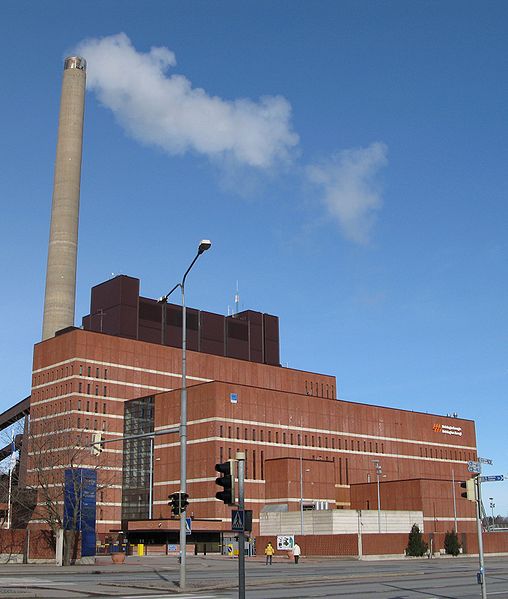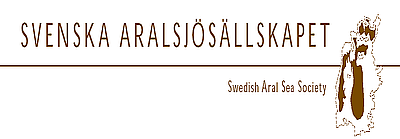10c.
Tools for approaching a sustainable economy
How can we turn the growth-economy so that it does not cause resource destruction and environmental damage, but still contributes to the welfare of our societies and inhabitants? There are a number of economic instruments to address this question. Some of these are used by the state, the public sector, and some by the private sector.
Most important is the Ecological tax reform, also called green tax shift. This refers to the transfer of taxation on incomes (salaries) towards taxation of resource flows. The simple logic is that what is scarce has to be used carefully should be taxed, that is natural resources, while what is not limited in this sense, i.e. human work or work opportunities, should not be limited by taxation. This green tax shift has occurred in many countries, but only to a limited extent. Thus, fiscal economy relies on taxation of energy (fossil fuel, e.g. petrol for cars) carbon dioxide emissions, several metals, fertilizers etc, to some extent in several Nordic countries, Germany and the Netherlands. However, to reduce resource flows, a much more drastic reform is needed. This reform is also assumed to reduce unemployment, as taxation of salaries should be drastically reduced.

To distribute taxation and achieve environmental reforms in the most efficient way, countries have used cap-and-trade systems. This means that a number of actors are allowed to emit a specific pollutant up to a cap. To ensure incentives for companies which can lower their pollution emission, rights can be traded between themselves. Such cap-and-trade schemes have been used for different pollutant and different set of actors, especially in the United States. In Europe, the best known case is the EU system for carbon dioxide emissions trading ETS (See Session 2c). The main advantage with cap-and-trade is that emissions can be limited exactly to what the environment is able to handle. However, in reality, the cap is set to what the emitters or economy can afford.
Societies also use positive economic instruments, i.e. subsidies, to support investments promoting sustainable development. Typical subsidies are carbon funds, which are given to support transition to a fossil fuel free economy, such as insulation of houses, green cars, energy efficiency measures, etc. Business are most often reluctant to investing, even when it is profitable, why authorities in different ways try to stimulate the companies. An illustrating case is the project “Energy Efficiency in Large Companies” by the Swedish Energy Authority. 100 large companies took part, all introduced a certified energy management system, they invested a total of 708 MSEK in a total of 1247 projects; tax reductions were only 150 MSEK and annual reduction of energy costs of 400 MSEK, and return of investments thus 1.5 years.
 Many states have a strong economic policy to stimulate steps towards a greener business in the private sector. Investing in energy efficiencies, local production of energy and similar steps thus become increasingly profitable with higher prices for fossil energy, trade support better markets etc. Green technologies or green business have become a large sector in the economy of several countries and an important export market. Similarly, we see local authorities greening their cities or towns, both for economic and ethical reasons, and individual households are also in the same manner greening their lives (see further Chapter 5c).
Many states have a strong economic policy to stimulate steps towards a greener business in the private sector. Investing in energy efficiencies, local production of energy and similar steps thus become increasingly profitable with higher prices for fossil energy, trade support better markets etc. Green technologies or green business have become a large sector in the economy of several countries and an important export market. Similarly, we see local authorities greening their cities or towns, both for economic and ethical reasons, and individual households are also in the same manner greening their lives (see further Chapter 5c).
The World Business Council for Sustainable Development has become an important actor in promoting sustainable development in the private sector. WBCSD was formed immediately after the Rio Conference in 1992. It played a significant role during the Johannesburg meeting. WBCSD has stressed the concept of eco-efficiency, which "is achieved by the delivery of competitively priced goods and services that satisfy human needs and bring quality of life, while progressively reducing ecological impacts and resource intensity throughout the life-cycle to a level at least in line with the earth’s carrying capacity."
Companies as well as authorities promote themselves as green or socially responsible in several ways, as it turns out to be good for their business. Environmental reports are often made individually according to the tradition for each company or authority, but in addition there are standards for environmental or sustainability reporting. Best known is the GRI – Global Reporting Initiative – which covers the whole panorama of sustainability, economic, environmental and social, often referred to as the triple bottom line.
 Companies as well as authorities may also become certified as environmentally or socially responsible by using an internationally established management standard. The International Organization for Standardization, ISO, has developed several standards and procedures for certification. Most important for sustainability work is the Environmental Management Systems, EMS, standard ISO 14001, and the Corporate Social Responsibility, CSR, which is a guideline ISO 26000, as well as the Energy Management Standard ISO 50001. The introduction of these standards are typical for larger companies, which in turn push their delivering partners further down in the production chain to also introduce such standards.
Companies as well as authorities may also become certified as environmentally or socially responsible by using an internationally established management standard. The International Organization for Standardization, ISO, has developed several standards and procedures for certification. Most important for sustainability work is the Environmental Management Systems, EMS, standard ISO 14001, and the Corporate Social Responsibility, CSR, which is a guideline ISO 26000, as well as the Energy Management Standard ISO 50001. The introduction of these standards are typical for larger companies, which in turn push their delivering partners further down in the production chain to also introduce such standards.
Adoption of management systems, most typically EMS, is part of voluntary business agreements. There are a number of such procedures between the private sector and the authorities. Adoption of such agreements typically eases the implementation of legal requirements and permits and inspections. Regulation and introduction of a number of environmental laws, especially from the European Commission, has played an important role in the improvement of the environmental behaviour of the European private sector.
There are also important financial mechanisms to support a change into a more sustainable economy. The large investors, including pensions funds, bank etc, increasingly choose to use sustainability measures as criteria for investing. The used criteria most often include CSR and GRI. The investors see a company that have a sound environmental profile and a good CSR as a more attractive investment object than one without. The latter may end up in trouble with authorities or the society, as well as their employees where it is working. There are thus very concrete reasons for supporting companies, which may contribute to a transition towards sustainability.
Finally, one should add that the several proposals for how to manage an economy towards steady state (non-growth economy) are part of the toolbox. See Chapter 10b.
Materials for session 10c
Basic level
- Read Environmental Management, book 1, chapter 11, pages 158-159: Sustainable Development and the Concept of an Ecological Tax Reform.
- Read A Sustainable Baltic Region, session 8, chapter 7, pages 43-46: Ecological Tax Reform by Svante Axelsson.
- Read Environmental Management, book 1, chapter 11, pages 149-158: Market-based Economic Instruments – Emission Trading.
- Read Environmental Management, book 1, chapter 4, pages 65-76: Self-regulation and Voluntary Corporate Initiatives
Medium level (widening)
- Study the role of European Union regulations in Environmental Management, Book 1, Chapter 2: Development of EU Environmental Regulation
- Read Environmental Management, book 1, chapter 10, pages 137-148: Economic Policy Instruments – Taxes and Fees
- Study the policies and roles of World Business Council for Sustainable Development.
Advanced level (deepening)
- Examine critically the concept of Green Growth, e.g. see:
Green Business
Green Growth in Asia and the Pacific - Learn about sustainability reporting at Global Reporting
References
Klemmensen, B., Pedersen, S., Dirckinck-Holmfeld, K. R., Marklund, A. and L. Rydén. 2007. Environmental Policy: Legal and Economic Instruments. Book 1 in a series on Environmental Management. Baltic University Press. Uppsala.
Zyclicz, T. (ed.). 1997. Ecological Economics – Markets, prices and budgets in a sustainable society. A Sustainable Baltic Region. Session 8. Baltic University Press. Uppsala.
BUP Sustainable Development Course
